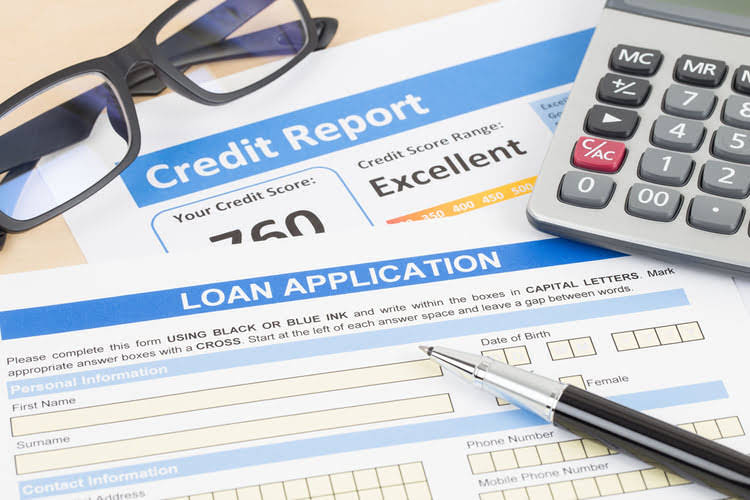If a company is new or doesn’t have hard assets it’s more difficult to borrow. For investors, the debt to equity ratio is used to indicate how risky it is to invest in a company. Gearing ratios are financial ratios that indicate how a company is using its leverage.
- Simply put, the higher the D/E ratio, the more a company relies on debt to sustain itself.
- A hard asset is a receivable for a product or service delivered that is recognized on the company’s balance sheet and shows a lender the business is capable of paying back the loan.
- As such, it is always advisable to compare the debt-to-equity ratios of companies in the same industry.
Therefore, the debt-to-equity ratio of XYZ Ltd stood at 0.40 as on December 31, 2018. Adam Hayes, Ph.D., CFA, is a financial writer with 15+ years Wall Street experience as a derivatives trader. Besides his extensive derivative trading expertise, Adam is an expert in economics and behavioral finance. Adam received his master’s in economics from The New School for Social Research and his Ph.D. from the University of Wisconsin-Madison in sociology. He is a CFA charterholder as well as holding FINRA Series 7, 55 & 63 licenses. He currently researches and teaches economic sociology and the social studies of finance at the Hebrew University in Jerusalem.
What is the long-term D/E ratio?
Investors are unlikely to invest in a company with a very low ratio because the business isn’t realizing the potential profit or value it could gain by borrowing and increasing operations. It is important to note the debt to equity ratio will vary across industries. This is because different types of businesses require different levels of debt and capital to operate and scale. The debt-to-equity (D/E) ratio is a metric that shows how much debt, relative to equity, a company is using to finance its operations.
A debt ratio of .5 means that there are half as many liabilities than there is equity. In other words, the assets of the company are funded 2-to-1 by investors to creditors. This means that investors own 66.6 cents of every dollar of company assets while creditors only own 33.3 cents on the dollar. Common debt ratios include debt-to-equity, debt-to-assets, long-term debt-to-assets, and leverage and gearing ratios. The debt ratio aids in determining a company’s capacity to service its long-term debt commitments.
What should you do if you have negative debt to equity ratio?
The debt-to-equity ratio is one of the most important financial ratios that companies use to assess their financial health. It provides insights into a company’s leverage, which is the amount of debt a company has relative to its equity. The D/E ratio of a company can be calculated by dividing its total liabilities by its total shareholder equity. Shareholder’s equity is the value of the company’s total assets less its total liabilities. When used to calculate a company’s financial leverage, the debt usually includes only the Long Term Debt (LTD). The composition of equity and debt and its influence on the value of the firm is much debated and also described in the Modigliani–Miller theorem.
Examples of the Debt Ratio
When used correctly, debt can show investors and lenders that you’re using the resources available to your business in order to realize a positive return on investment. Assessing whether a D/E ratio is too high or low means viewing it in context, such as comparing to competitors, looking at industry averages, and analyzing cash flow. The nature of the baking business is to take customer deposits, which are liabilities, on the company’s balance sheet. However, in this situation, the company is not putting all that cash to work. Investors may become dissatisfied with the lack of investment or they may demand a share of that cash in the form of dividend payments.
Airlines, as well as oil and gas refinement companies, are also capital-intensive and also usually have high D/E ratios. One limitation of the D/E ratio is that the number does not provide a definitive assessment of a company. In other words, the ratio alone is not enough to assess the entire risk profile. You can calculate the D/E ratio of any publicly traded company by using just two numbers, which are located on the business’s 10-K filing. However, it’s important to look at the larger picture to understand what this number means for the business.
As an entrepreneur or small business owner, this ratio is used when applying for a loan or business line of credit. This website is using a security service to protect itself from online attacks. There are several actions that could trigger this block including submitting a certain word or phrase, a SQL command or malformed data. Overall, the D/E ratio provides insights highly useful to investors, but it’s important to look at the full picture when considering investment opportunities. Banks also tend to have a lot of fixed assets in the form of nationwide branch locations.
Debt-to-Equity (D/E) Ratio FAQs
A financial professional will offer guidance based on the information provided and offer a no-obligation call to better understand your situation. Ask a question about your financial situation providing as much detail as possible. Our mission is to empower readers with the most factual and reliable financial information possible to help them make informed decisions for their individual needs.
The quick ratio measures the capacity of a company to pay its current liabilities without the need to sell its inventory or acquire additional financing. Understanding the debt to equity ratio in this way is important to allow the management of a company to understand how to finance the operations of the business firm. Shareholder’s equity, if your firm is incorporated, is the sum of paid-in capital, the contributed capital above the par value of the stock, and retained earnings. The company’s retained earnings are the profits not paid out as dividends to shareholders. The debt to equity ratio indicates how much debt and how much equity a business uses to finance its operations. Other definitions of debt to equity may not respect this accounting identity, and should be carefully compared.
And that’s not to mention the fact that you could still get it wrong if you don’t know the finer details of what to look out for. This is where the debt to equity ratio calculator what is impairment can be a huge boon to your business. Where debt financing costs are greater than the actual revenue growth generated by the company, stock prices can and often do fall.
When a company uses debt to raise capital to finance its projects or operations, it increases risk. For this reason, business analysts and investors may use the debt-to-equity ratio and other leverage ratios to help them assess whether a company’s debt load is good or bad. In the consumer lending and mortgage business, two common debt ratios used to assess a borrower’s ability to repay a loan or mortgage are the gross debt service ratio and the total debt service ratio. When companies are scaling, they need money to launch products, hire employees, assist customers, and expand operations.
The debt-to-equity ratio or D/E ratio is an important metric in finance that measures the financial leverage of a company and evaluates the extent to which it can cover its debt. It is calculated by dividing the total liabilities by the shareholder equity of the company. The debt to equity ratio can be misleading unless it is used along with industry average ratios and financial information to determine how the company is using debt and equity as compared to its industry. Companies that are heavily capital intensive may have higher debt to equity ratios while service firms will have lower ratios. In the previous example, the company with the 50% debt to equity ratio is less risky than the firm with the 1.25 debt to equity ratio since debt is a riskier form of financing than equity. Along with being a part of the financial leverage ratios, the debt to equity ratio is also a part of the group of ratios called gearing ratios.
Quick assets are those most liquid current assets that can quickly be converted into cash. These assets include cash and cash equivalents, marketable securities, and net accounts receivable. Different industries vary in D/E ratios because some industries may have intensive capital compared to others.
They can also issue equity to raise capital and reduce their debt obligations. An increase in the D/E ratio can be a sign that a company is taking on too much debt and may not be able to generate enough cash flow to cover its obligations. https://intuit-payroll.org/ However, industries may have an increase in the D/E ratio due to the nature of their business. For example, capital-intensive companies such as utilities and manufacturers tend to have higher D/E ratios than other companies.
If its assets provide large earnings, a highly leveraged corporation may have a low debt ratio, making it less hazardous. Contrarily, if the company’s assets yield low returns, a low debt ratio does not automatically translate into profitability. A ratio greater than 1 shows that a considerable amount of a company’s assets are funded by debt, which means the company has more liabilities than assets. A high ratio indicates that a company may be at risk of default on its loans if interest rates suddenly rise. A ratio below 1 means that a greater portion of a company’s assets is funded by equity. If a debt to equity ratio is lower — closer to zero — this often means the business hasn’t relied on borrowing to finance operations.
These companies are likely in a period of positive growth supported by balanced financing from both debt lenders and equity shareholders. However, the ideal debt to equity ratio will vary depending on the industry because some industries use more debt financing than others. Capital-intensive industries like the financial and manufacturing industries often have higher ratios that can be greater than 2. With a debt to equity ratio of 1.2, investing is less risky for the lenders because the business is not highly leveraged — meaning it isn’t primarily financed with debt. Let’s say a software company is applying for funding and needs to calculate its debt to equity ratio.


